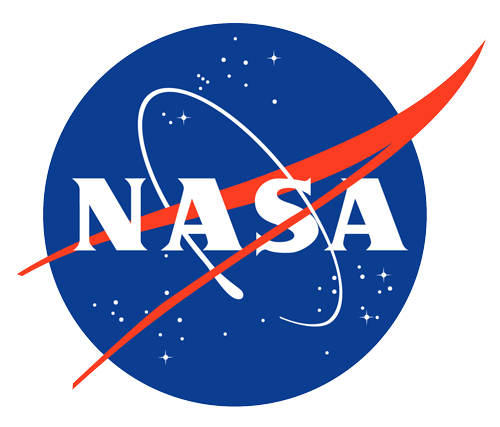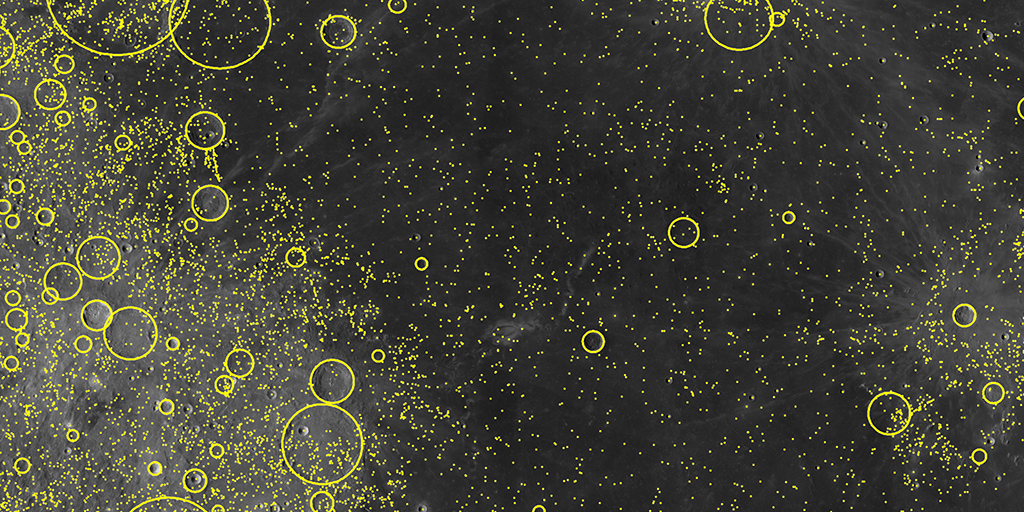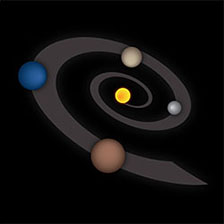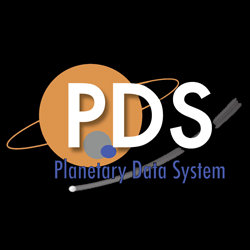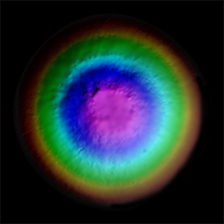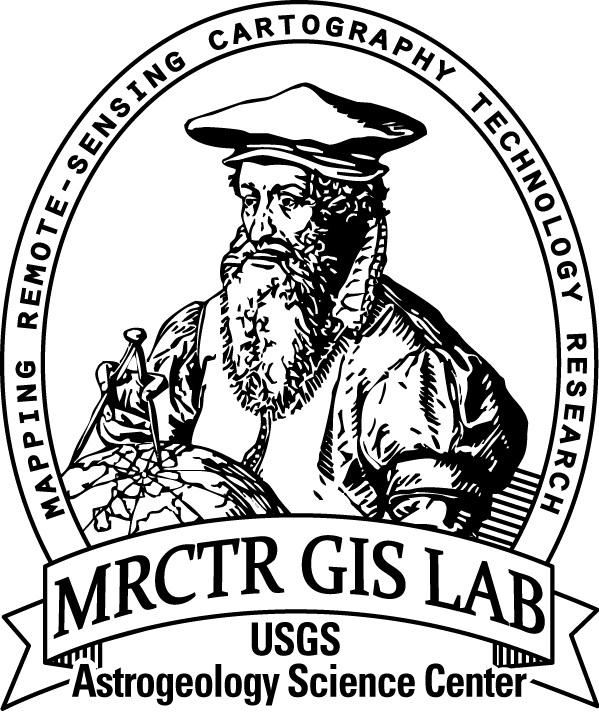Moon Crater Database v1 Robbins
- Primary Authors
- Stuart Robbins
- Originators
- Stuart Robbins, Southwest Research Institute
- Publisher
- USGS Astrogeology Science Center
- Publication Date
- 2018-08-15
- Abstract
-
Product Information:
The Lunar Crater Database contains approximately 1.3 million lunar impact craters and is approximately complete for all craters larger than about 1-2 km in diameter (Robbins, 2019). Craters were manually identified and measured on Lunar Reconnaissance Orbiter (LRO) Camera (LROC) Wide-Angle Camera (WAC) images, in LRO Lunar Orbiter Laser Altimeter (LOLA) topography, SELENE Kaguya Terrain Camera (TC) images, and a merged LOLA+TC DTM (Barker, 2016).
This archive uses PDS4 archiving standards. An overview of PDS4 is provided in the PDS4 Concepts document (2018) and the standards are specified in the PDS4 Standards Reference (2018). Mission and Instrument Information: The U.S. National Aeronautics and Space Agency (NASA) launched the Lunar Reconnaissance Orbiter (LRO) spacecraft to the Moon in June 2009 (Tooley et al., 2010) carrying a variety of instruments including the Lunar Orbiter Laser Altimeter (LOLA), which continues to return high-resolution images of the lunar surface from its eccentric polar mapping orbit (Petro et al., 2019). The Lunar Reconnaissance Orbiter Camera (LROC) is a system of three cameras mounted on the LRO that capture high resolution black and white images and moderate resolution multi-spectral images of the lunar surface. The LROC consists of two narrow-angle cameras (NACs) that provide 0.5 meter-scale panchromatic images over a 5 km swath, a wide-angle camera (WAC) to provide images at a scale of 100 meters/pixel in seven color bands over a 60 km swath, and a Sequence and Compressor System (SCS) supporting data acquisition for both cameras. The LROC data sets are produced by the LROC Team at the Tempe campus of Arizona State University. The LROC data sets are produced by the LROC Team at the Tempe campus of Arizona State University. The LOLA has collected over more than 6.5 billion measurements of global surface height with a vertical precision of ~10 cm and an accuracy of ~1m (Mazarico et al., 2013). With such highly accurate global coverage, the resulting topographic map has become the reference geodetic framework for the lunar community and has led to the highest resolution and most accurate polar digital elevation models (DEMs) to date. The Japan Aerospace Exploration Agency (JAXA) launched the SELENE Kaguya spacecraft to the Moon in September 2007. The mission concluded June 10, 2009 when the spacecraft was intentionally crashed onto the lunar surface. Subsequent data collection and mapping efforts resulted in the largest lunar exploration project since the Apollo program (Haruyama et al., 2008). The high-performance optical Terrain Camera (TC), a 10-meter spatial resolution stereo-camera, was part of the Lunar Imager/Spectrometer (LISM) instrument suite (Kato et al., 2006), along with the Multi-band Imager (MI, 20 m; (Ohtake et al., 2008) and Spectral Profiler (SP; Matsunaga et al., 2008). Mission objectives for the TC included production of global, high-resolution, high-contrast mosaicked maps (tiles) of the Moon (e.g., Kato et al., 2006; Haruyama et al., 2008). References: Barker, M. K., EMazarico, E., Neumann, G. A., Zuber, M. T., Haruyama, J., & Smith, D. E. (2016). A new lunar digital elevation model from the Lunar Orbiter Laser Altimeter and SELENE Terrain Camera. Science Direct, 273, 346-355. https://www.sciencedirect.com/science/article/pii/S0019103515003450 Haruyama, J., Matsunaga, T., Ohtake, M., Morota, T., Honda, C., Yokota, Y., Torii, M., Ogawa, Y., & LISM Working Group (2008). Global lunar-surface mapping experiment using the Lunar Imager/Spectrometer on SELENE. Earth Planets Space, 60, 243-255. https://doi.org/10.1186/BF03352788 Kato, M., Takizawa, Y., Sasaki, S., & SELENE Project Team (2007). The SELENE Mission: Present status and science goals. Paper presented at the 38th Lunar and Planetary Science Conference, Lunar and Planetary Institute, Houston, TX. https://www.lpi.usra.edu/meetings/lpsc2007/pdf/1211.pdf Matsunaga, T., Ohtake, M., Haruyama, J., Ogawa, Y., Nakamura, R., Yokota, Y., Morota, T., et al. (2008). Discoveries on the lithology of lunar crater central peaks by SELENE Spectral Profiler. Geophysical Research Letters, 35(L23201). https://doi.org/10.1029/2008GL035868 Mazarico, E., Rowlands, D. D., Neumann, G. A., Smith, D. E., Torrence, M. H., Lemoine, F. G., & Zuber, M. T. (2012). Orbit determination of the Lunar Reconnaissance Orbiter. Journal of Geodesy, 86(3), 193-207. https://doi.org/10.1007/s00190-011-0509-4 Ohtake, M., Haruyama, J., Matsunaga, T., Yokota, Y., Morota, T., Honda, C., & LISM team (2008). Performance and scientific objectives of the SELENE (KAGUYA) Multiband Imager. Earth Planets Space, 60, 257-264. https://doi.org/10.1186/BF03352789 Petro, N. E., Keller, J. W., Cohen, B. A., & McClanahan, T. P. (2019). Ten years of the Lunar Reconnaissance Orbiter: Advancing lunar science and context for future lunar exploration. Paper presented at the 50th Lunar and Planetary Science Conference, Lunar and Planetary Institute, Houston, TX. https://www.hou.usra.edu/meetings/lpsc2019/pdf/2780.pdf Robbins, S. J. (2019). A new global database of lunar impact craters >1-2 km: 1. Crater locations and sizes, comparisons with published databases, and global analysis. Journal of Geophysical Research: Planets, 124(4), pp. 871-892. https://doi.org/10.1029/2018JE005592 Tooley, C. R., Houghton, M. B., Saylor Jr., R. S., Peddie, C., Everett, D. F., Baker, C. L., & Safdie, K. N. (2010). Lunar Reconnaissance Orbiter mission and spacecraft design. Space Science Reviews, 150(1), 23-62. https://doi.org/10.1007/s11214-009-9624-4
- Purpose
- The purpose of this database is to have a uniform, complete census of lunar impact craters from which to conduct research studies. It is intended to save time for researchers, but researchers are strongly encouraged to understand the database by reading the first paper that describes its caveats, and to make sure that it is suitable for their individual needs.
Contact and Distribution
- Format
- Database, Vector Data
- Access Scope
- PDS
- Supplemental Information
- https://pds-imaging.jpl.nasa.gov/portal/lro_mission.html, https://pds-imaging.jpl.nasa.gov/volumes/lro.html, https://pdsimage2.wr.usgs.gov/Individual_Investigations/moon_lro.kaguya_multi_craterdatabase_robbins_2018/
- Native Data Set Environment
- ESRI Arcinfo
- Astrogeology Theme
- Craters, Geographic Information System (GIS), Remote Sensing
- Mission Names
- Kaguya, Lunar Reconnaissance Orbiter
- Instrument Names
- LOLA, LROC, SELENE, TC
- Online Package Link
- https://astrogeology.usgs.gov/search/map/moon_crater_database_v1_robbins
- External File Size
- 93 MB
- Online File Link
- https://astropedia.astrogeology.usgs.gov/download/Moon/Research/Craters/lunar_crater_database_robbins_2018
- Access Instructions
- CSV file reader; GIS* Application needed for viewing shapefiles.
- Contact Address
- 2255 N. Gemini Drive
- Contact City
- Flagstaff
- Contact State
- AZ
- Contact Postal Code
- 86001
- Contact Email
- astroweb@usgs.gov
Data Status and Quality
- Time Period of Content (start)
- 2011-06-01
- Time Period of Content (stop)
- 2018-08-15
- Currentness Reference
- Ground condition
- Progress
- In Work
- Update Frequency
- As needed
- Completeness Report
- Without another, independent crater database to even smaller craters, it is not possible to provide a true completeness report. However, based on several different metrics, including a statistical analysis using crater size-frequency distributions and attempts in isolated areas to identify all craters larger than ~100 meters, this database is estimated to be a complete census of all lunar craters larger than 1-2 km in diameter. The exact completeness point varies based on location (it is complete to smaller diameters in lunar maria where identifying impacts is more objective and terrain is flatter) and exact metric used. This database is meant to be accurate in the aggregate, and while every effort was made to ensure accuracy with each, individual crater, if one is only studying a very few craters, they may find it more accurate to build their own database.
- Process Description
- Please see the primary database paper for an extensive description of the process to build this database. In brief, WAC (70-100 m/pix), TC (30 m/pix), and hillshade DTMs (5-60 m/pix) were searched several times each and crater rims were manually traced, where visible, with approximately 2.5 pixels per vertex point. Circles and ellipses were fit to the rim points. Projection issues were taken into account by using Great Circle distances and bearings, a process validated by returning a meaningful and correct fit for Shackleton crater that encompasses the lunar south pole.
- Source Title
- WAC Global Morphologic Map
- Source Online Linkage
- https://pdsimage2.wr.usgs.gov/Individual_Investigations/moon_lro.kaguya_multi_craterdatabase_robbins_2018/
- Source PDS Archive
- Lunar Reconnaissance Orbiter
- PDS Status
- PDS 4 In Review
- Attribute Accuracy Report
- Best Effort
- Horizontal Positional Accuracy Report
- Best Effort
Geospatial Information
- Target
- Moon
- System
- Earth
- Minimum Latitude
- -90
- Maximum Latitude
- 90
- Minimum Longitude
- 0
- Maximum Longitude
- 360
- Direct Spatial Reference Method
- Vector
- Object Type
- Grid Cell
- Quad Name
- Radius A
- 1737151.3
- Radius C
- 1737151.3
- Control Net
- LOLA
- Map Projection Name
- Simple Cylindrical
- Latitude Type
- Planetocentric
- Longitude Direction
- Positive East
- Longitude Domain
- 0 to 360

